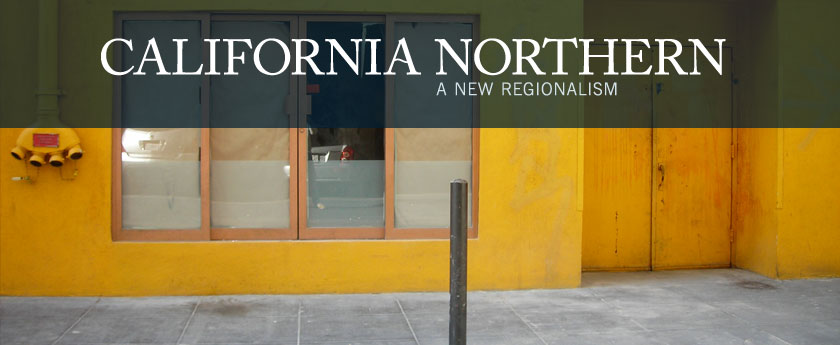Notes from the Field
Alamo Cemetery, Contra Costa County
By Jessica Langlois
My grandmother, in a rain jacket and trifocals, stands in front of nine grave markers, one of which bears her name. It is a damp but clear October afternoon, quiet except for the soft crunch of golden leaves beneath our feet and the steady hiss of nearby Highway 680. This is my first time visiting the Hall family plot, purchased over 150 years ago by my great-great-grandfather and his brother shortly after the founding of this Alamo Cemetery, a baseball diamond-sized knoll nestled in a valley thirty minutes east of Oakland, where my grandmother and I now have neighboring apartments.
The shiny still-green leaves of a bushy oak tree almost completely obscure the robust gravestones of Myron and Lucy Hall, the first of the Halls to settle here in 1859. Some of my family is upset by the imposition of the tree, but the Alamo-Lafayette Cemetery District will not cut it away, as it is indigenous to the region.
When my great-great-grandparents moved west from Pennsylvania on the heels of the Gold Rush, they spent $4,000 to buy a hundred-acre farm here in present-day Alamo. Myron, an aspiring botanist, grafted a scion of an English Walnut tree (a gift from a cousin in Europe) to an indigenous Black Walnut. Without the strong root system of the Black Walnut, the English–whose nut is sweeter and easier to crack–could never have prospered in California. His graft is celebrated in old newspaper clippings and in historical society records as “The Birth of the Walnut Industry” in Northern California. He gave away cuttings of his benchmark specimen, known as “The Mother Tree,” to friends and neighbors, and soon farms throughout the valley were full of these flourishing hybrid trees. The Mother Tree stood for over 100 years, and each generation of my family celebrated the autumn harvest, returning home with walnut-blackened hands.
Lost Hills, Coalinga, Salinas
By Jesse Furrow
My eyes and mind tend to drift westward, like fugitives, and now they are at it again. I had originally intended to drive straight through from Los Angeles to my home in Oakland, quickly, but the I-5 corridor along the western flank of California’s Central Valley is long, flat, and wearisome. The landscape is thin and chafed, and combined with the heat, the construction zones, and the monotony of slowly prying myself across miles of disciplined dread, I am lulled into boredom. So, I look out upon the sparse and simple ruffle of blonde hills and chaparral to my left, and plot my escape.
Lost Hills? Sounds good. I make my break and exit the interstate, and start westward on Highway 46. A junction approaches, and still uncommitted I opt to head north across the Antelope Plain. I reduce my speed, roll down my window, and breathe. Finally. The air is earthen and quiet. To the east, the Great Central Valley is slowly eclipsed by the soft and low virtue of the Kettlemen Hills.
Siskiyou Mountains, Del Norte County
By Michael Kauffmann
I came to Humboldt County ten years ago to pursue a teaching credential, and upon arriving, I quickly discovered what it meant to “live behind the redwood curtain.” Significant rain falls every winter, and the summer coastal fog often lingers all day. The region’s unique climate–a perennial fall–was the perfect fit for me. The region’s location, situated on the western edge of one of the most species-rich coniferous forests on Earth, was a fine place to settle and enjoy the ever-greenery. Here, the conifers–an ancient linage of plants sculpted by nature over the past 350 million years–are unique to North America in both their epic size and unparalleled diversity.
A few months after I arrived, a long weekend offered the chance to disappear into the wild. Since childhood, Bigfoot stories have been a fascination. The legend was enhanced for me by “unsolved” or “mystery” film snippets I watched and reports I read in middle school. The 1967 film by Roger Patterson–with Bigfoot shambling along, looking over its shoulder–became part of my dreams. I knew the images had been captured in the Siskiyou Mountains. After pouring over maps, I filled my backpack with winter gear, food, and a copy of David Rains Wallace’s The Klamath Knot. The adventure was on.
The above are excerpts of Issue 6’s Notes from the Field

